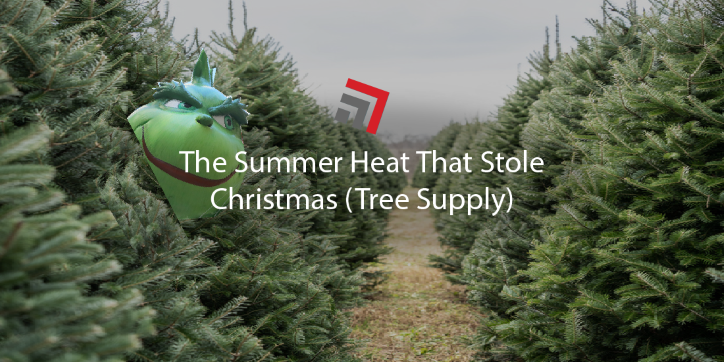As people have been and continue to put up their Christmas trees this season, it should be noted how the Christmas tree supply has been directly impact from the extreme heat that occurred in the Pacific Northwest this summer – and how that impact has been felt all through the United States.
Oregon, which is listed as the top Christmas tree-producing state in the country and produces around a third of the nation’s Christmas tree supply, according to the latest Census of Agriculture that was published in 2017 has especially been impacted by the extreme heat. Tom Norby, who is the owner of Trout Creek Tree Farm located in Corbett, Oregon spoke to Freightwaves about how the extreme heat has been killer. “The heat dome was certainly the worst. We’ve never had 116 degrees, let alone for three days in a row,” he said. A heat dome is a hot air mass that develops when high pressure above prevents warm air below from rising, which then traps the warm air as if it were in a dome.
Interestingly enough parts of the trees or the entire tree can experience sunburn when they are exposed to too much sunlight and heat, without sufficient moisture – which can result in damage or death. “There are literally fields with hundreds of acres of dead seedlings – just 100% mortality across the entire field. If you produce a million trees a year, you don’t have to deal with that,” Norby told Freightwaves. Norby has also lost every single one of his seedlings, as well as several large trees. This has created a bit of a dent in Norby’s inventory, which isn’t too much of a problem this year however, if it becomes a two-year issue, that’s when it becomes a bigger issue.
This lower supply of Christmas trees has created a 10-30% price increase in what consumers will be paying for a tree this year which will mainly be felt out west, since trees that are grown in the west are sold in the western states, Doug Hudley a spokesperson for the National Christmas Tree Association told Freightwaves. Some tree farmers raised their prices in order to make a living, while other tree farmers decided not to raise prices.
This has the potential to have an impact in the future as the average Christmas tree takes seven years to fully grow and depending on the species and how tall growers want them to be before harvesting. If you have any questions or would like to learn more today, reach out to a team member and we would be happy to discuss further with you!



Recent Comments